Leather branding might seem intimidating at first, but it’s not that difficult. In this article, we will go over the basics of leather branding and provide some tips to help you get started. We’ll also answer some common questions about the process. So whether you’re a beginner or a seasoned pro, there’s something for everyone in this guide!
Learn How to Stamp Leather with an Electric Branding Iron
The first step in leather branding is to choose the right tool for the job. An electric branding iron is a great option for those who are just starting. It heats up quickly and allows you to create a consistent look with each stamp. Plus, it’s easy to use and can be used on many different types of leather. [1]
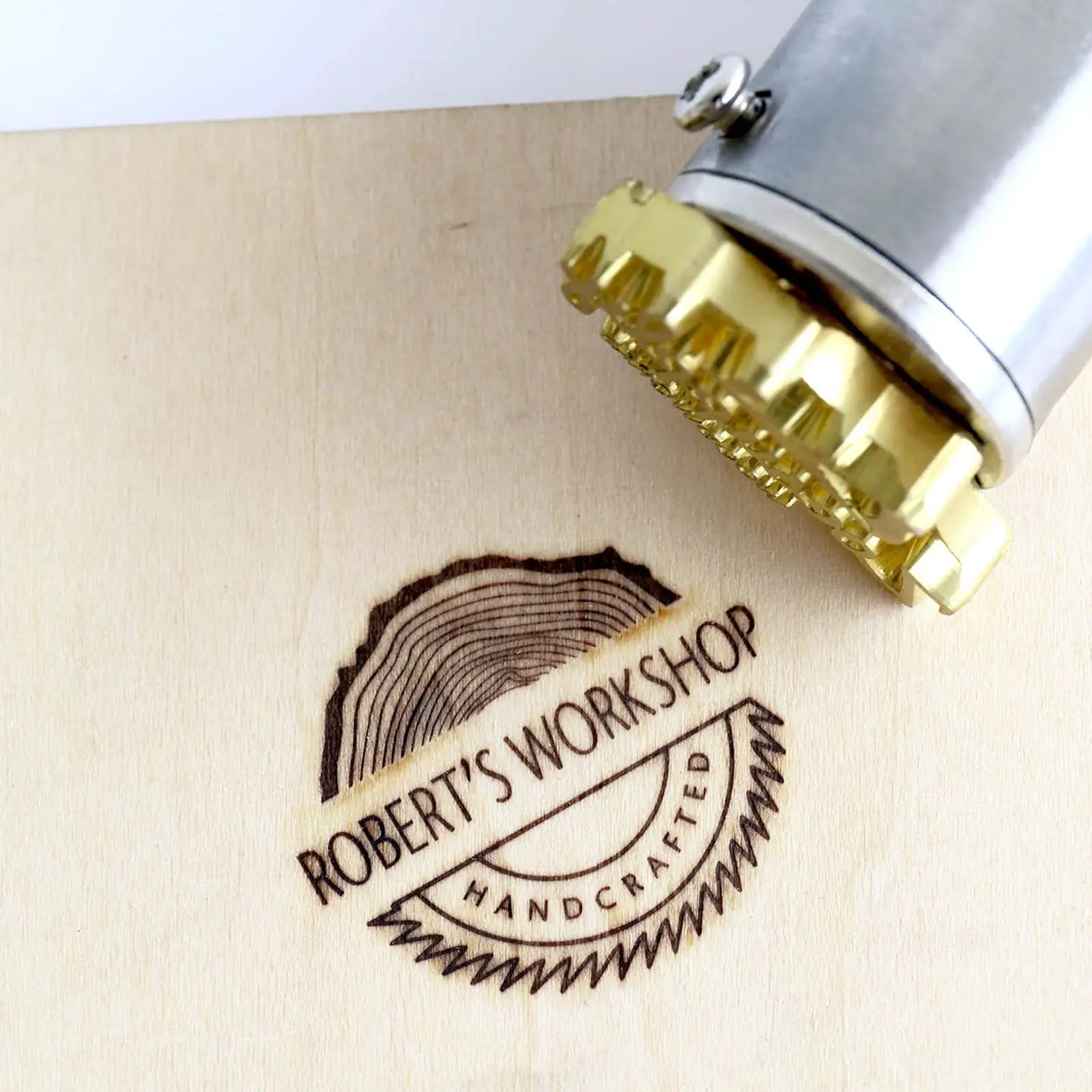
1. Set The Temperature
Before you begin, it’s important to set the temperature of your branding iron. This is especially important if you’re working with thin leather, as a too-hot iron can damage it. Start at the lowest setting and gradually increase until you achieve the desired result.
2. Wet The Leather
Wet the leather before you start branding. This will help the leather absorb the heat more evenly and prevent it from sticking to the iron. Dip a sponge or cloth into the water, wring out the excess, and gently dab it over the area where you want to brand it.
3. Use an Electric Branding Iron
Once the leather is wet and the temperature is set, it’s time to start branding. Place your electric branding iron on the leather and hold it down firmly. Move slowly and evenly to create a consistent look. If you find that the iron isn’t hot enough, increase the temperature slightly until you get the desired effect.
4. Remove The Brand
Once you’ve finished branding, allow the leather to cool completely before removing the iron. This will help ensure that the brand is applied properly and won’t smear or smudge. Use a damp cloth to rub away any residue left behind by the iron.
5. Let It Dry
After you’ve removed the branding iron, let the leather dry completely. This will help ensure that the brand stays in place and doesn’t rub off. You can also use a soft cloth to buff the area after it has dried to give it an extra shine.
What are branding irons used for?
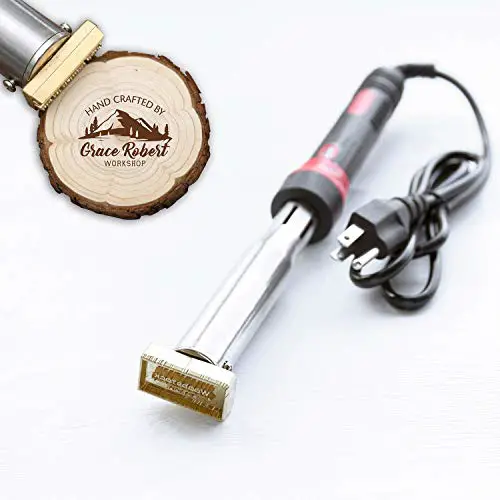
Branding irons are used to mark leather with distinct patterns, logos, or other designs. This is a great way to personalize your leather items and create a unique look. It can also be used to add value by giving items that extra bit of flair. [2]
Why use a branding iron?
Branding irons are a great way to create designs that are more intricate and detailed than you could achieve with other methods. Plus, they offer more control over the size and shape of the design, as well as how deep it is stamped into the leather. This makes them ideal for creating unique and custom pieces.
Branding Iron Temperature
The temperature of your branding iron will depend on the type of leather you’re using. Generally speaking, a lower temperature is better for thinner leather, while thicker leather can handle a slightly higher heat setting. Make sure to start at the lowest setting and gradually increase as needed until you achieve the desired results.
Using a branding iron
When using a branding iron, it’s important to take safety precautions. Make sure to wear heat-resistant gloves and keep the iron away from children and pets. Also, be sure to unplug the tool when it is not in use and allow it to cool completely before touching it or storing it.
The Top 7 Leather Engraving Techniques Explained
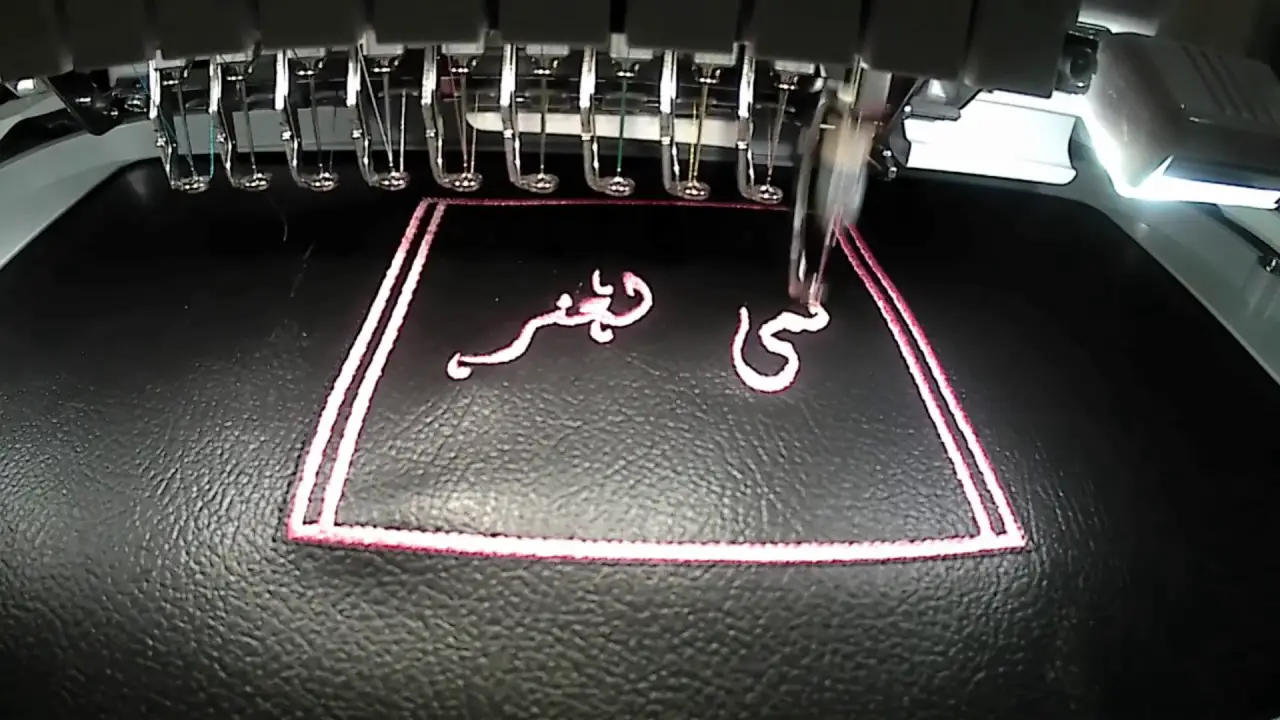
Several different techniques can be used to engrave leather, each with its advantages and disadvantages. Here is a rundown of the top 7 techniques. [3]
1. Branding
Branding is a popular leather engraving method that involves using a heated branding iron to burn the desired design into the surface of the leather. This technique is great for creating intricate and detailed designs with precision, but it can be time-consuming and may require practice to achieve consistent results.
2. Pyrography
Pyrography is a method of leather engraving that involves using heated metal tools to burn the design into the leather. This technique is similar to branding, but it can be done with far less heat and in much less time. It’s great for creating detailed designs without having to worry about burning the material or scorching it.
3. Laser Engraving
Laser engraving is another popular leather engraving technique. It involves using a laser beam to cut or burn the desired pattern into the surface of the leather. This technique is great for creating intricate and detailed designs with precision and accuracy, but it can be costly and time-consuming.
4. Embossing
Embossing is a leather engraving technique that involves pressing a design or pattern into the surface of the leather. This technique is great for creating bold, raised designs with minimal effort and expense.
Blind Printing
Blind printing is a method of leather engraving that involves pressing foil or pigment into the leather. It’s great for creating intricate designs with vivid colors, but it can be difficult to achieve consistent results.
Color Printing
Color printing is a type of leather engraving that involves using dye to print the desired design onto the surface of the leather. This method of design is ideal for creating vibrant, intricate pieces; however, it can be expensive and may require some trial and error to get the desired results.
Embossing Leather
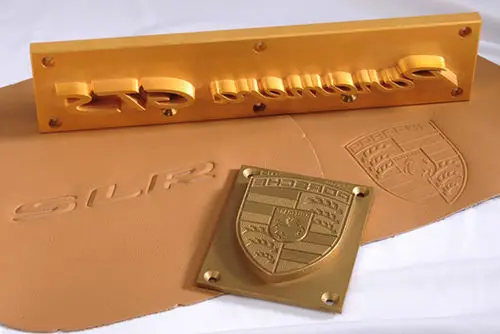
Leather embossing is a process that involves pressing patterns into the leather to create interesting designs and textures. It can be done with either heat-embossing techniques or by using traditional tools such as stamps, rollers and dies. The effect will add a unique touch of texture and style to any leather item. Heat embossing works best on thinner leathers and produces an engraved-like effect, while traditional stamping creates a more raised pattern.
Embossed leather can be used in many different ways. It’s an attractive treatment for handbags, purses, wallets, clothing and other accessories like belts or key chains. And it’s also often used for interior design projects such as furniture upholstery, wall coverings and even book bindings. Embossed leather looks great on all sorts of items, adding a hint of texture that can bring out the beauty of any piece.
The process of embossing leather is relatively simple but requires precision and patience. Before you begin, it’s important to make sure the leather surface is clean and dry to create a crisp design. You may also want to experiment with different types of embossing tools including stamps, rollers, dies or heat presses for greater control over the final look. Once your pattern is ready for embossing, start by laying the leather flat on a hard surface before applying pressure from above with your tool of choice. For best results, apply an even pressure that is firm but not too hard to ensure a consistent pattern.
5. Carving
Leather carving is an art form that has been around since ancient times. It is a craftsmanship process in which leather is carved into intricate patterns and designs using specialized tools and techniques. The finished product can be used to create clothing, accessories, home decor, and other items. Leather carving requires patience and skill as it involves cutting the leather with precision while maintaining a steady hand. Carving leather allows the artist to express their creativity by creating unique pieces of art from this natural material. With practice, anyone can learn how to carve leather for use in a variety of projects! [4]
Leather carving tools come in many shapes and sizes and are often made from steel or carbon blades. They may include knives, chisels, gouges, and swivel knives. Depending on the project, a variety of leatherworking techniques can be used such as relief carving, embossing, engraving or stamping. Leather can also be stained to add color and texture.
6. Leather perforation
Leather perforation is a process where patterns are cut out of leather using special machines and tools. Perforations can be used to add texture and design to pieces, as well as create eye-catching details such as decorative holes, ridges, or accents. Leather perforation can also give garments added breathability and durability. This technique has been popularized in recent years for its versatility and practicality in creating complex designs with minimal effort. It’s great for producing intricate shapes that would otherwise be difficult to produce by hand or using traditional methods. Leather perforations allow you to easily incorporate logos, graphics, or other elements into your pieces without having to worry about tedious sewing processes or precise measurements.
7. Embroidery
Embroidery is a leather engraving technique that involves using specialized tools to stitch a design into the surface of the leather. This technique is great for creating intricate and detailed designs with precision, but it can be time-consuming and may require practice to achieve consistent results.
With the right tools and techniques, you can create beautiful leather engravings with ease! [5]FAQ
How do you brand leather yourself?
You can brand leather yourself by using a few different techniques. You can use a branding iron to burn the design into the surface of the leather, a laser engraver to cut or burn detailed designs, an embossing tool to press bold designs into the leather, blind printing for intricate designs, color printing for colorful designs, carving tools for intricate shapes and textures, perforation tools for delicate designs, and embroidery tools for stitching detailed patterns.
How do you brand a logo on leather?
If you want to brand a logo on leather, the best technique is to use an embossing tool. This will allow you to press the design into the surface of the leather and create bold, raised designs with minimal effort and expense. For intricate designs, you can go for a branding iron or laser engraver; however, these techniques might involve more effort and practice to ensure consistent results.
How do I emboss my own leather?
To emboss your leather, you will need to purchase an embossing tool. These tools come in various shapes and sizes and can be used to press designs into the surface of the leather. Make sure to practice a few times on some scrap leather before attempting your final project. You may also want to use a heat gun or iron for detailed designs, although these methods may require more time and practice to achieve consistent results.
What is the difference between embossing and engraving?
Embossing is a technique where you press designs into the surface of the leather, while engraving is a technique where you cut or burn designs into the leather. Embossing typically involves using an embossing tool to create raised designs on the surface of the leather, while engraving typically involves using a laser engraver or branding iron to cut or burn detailed designs. Both techniques can be used to create beautiful and intricate leather pieces with ease! [6]
Which is better, etching or engraving?
It depends on the design you’re trying to create. Etching is a technique where you use chemicals to burn away portions of the leather, while engraving is a technique where you cut or burn designs into the surface of the leather. Etching can be great for achieving detailed designs with minimal effort and expense, but it may require practice to achieve consistent results. Engraving, on the other hand, can be used to create intricate and detailed designs with precision, but it may also require more time and practice to achieve desired results. Ultimately, it’s up to you which technique works best for your project!
Useful Video: Making a Wood & Leather Branding Iron
Conclusion
Branding leather is an investment that requires a bit of work upfront but the results can be immensely rewarding. With consistent branding methods and care, you can use leather goods to show the world the unique quality your products possess. Not only will leather imprints become instantly recognizable to your customers, it also adds an element of luxury and long-lasting durability. It’s clear why many brands rely so heavily on these natural materials – they offer classic style and timeless beauty that can’t be replicated with any other material. The best part is that if you spend some time learning how to brand leather properly, it won’t take much additional effort going forward; you’ll have expertly branded products in no time! Now that you understand how to brand leather like a pro, don’t hesitate – dig into those tools and supplies, create kickass new designs, grow your customer base, and watch as everyone gets blown away by the unique items you make. Your business depends on this – take action now!
References
- https://www.gearheartindustry.com/blog/how-to-brand-leather-with-an-electric-branding-iron/
- https://www.durable-tech.com/blog/using-a-branding-iron
- https://joojoobs.com/top-7-leather-engraving-techniques-explained/
- https://mazeleather.com/how-to-carve-leather/
- https://allstitch.com/blogs/embroidery-blogs/how-to-embroider-on-leather
- https://hrnews.co.uk/engraving-vs-embossing-what-is-best-for-my-project/

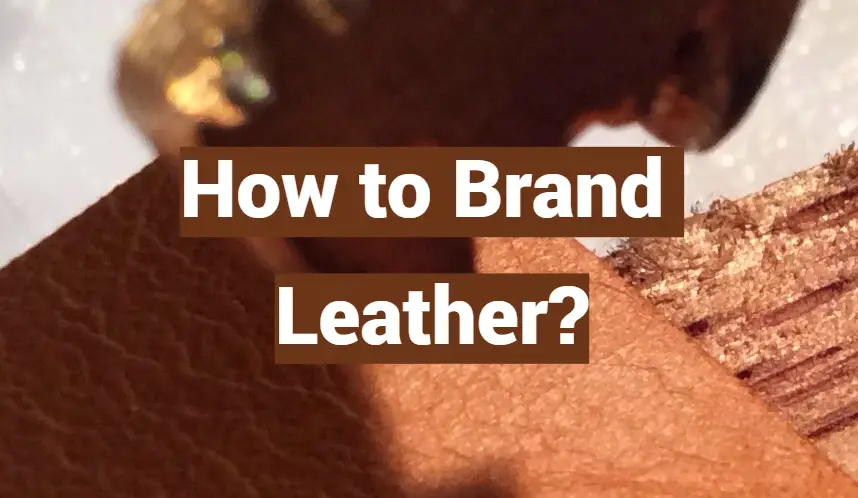

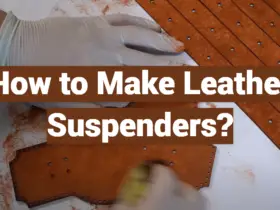

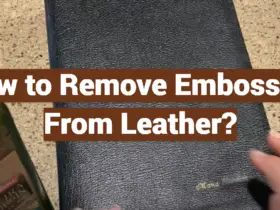

Leave a Reply